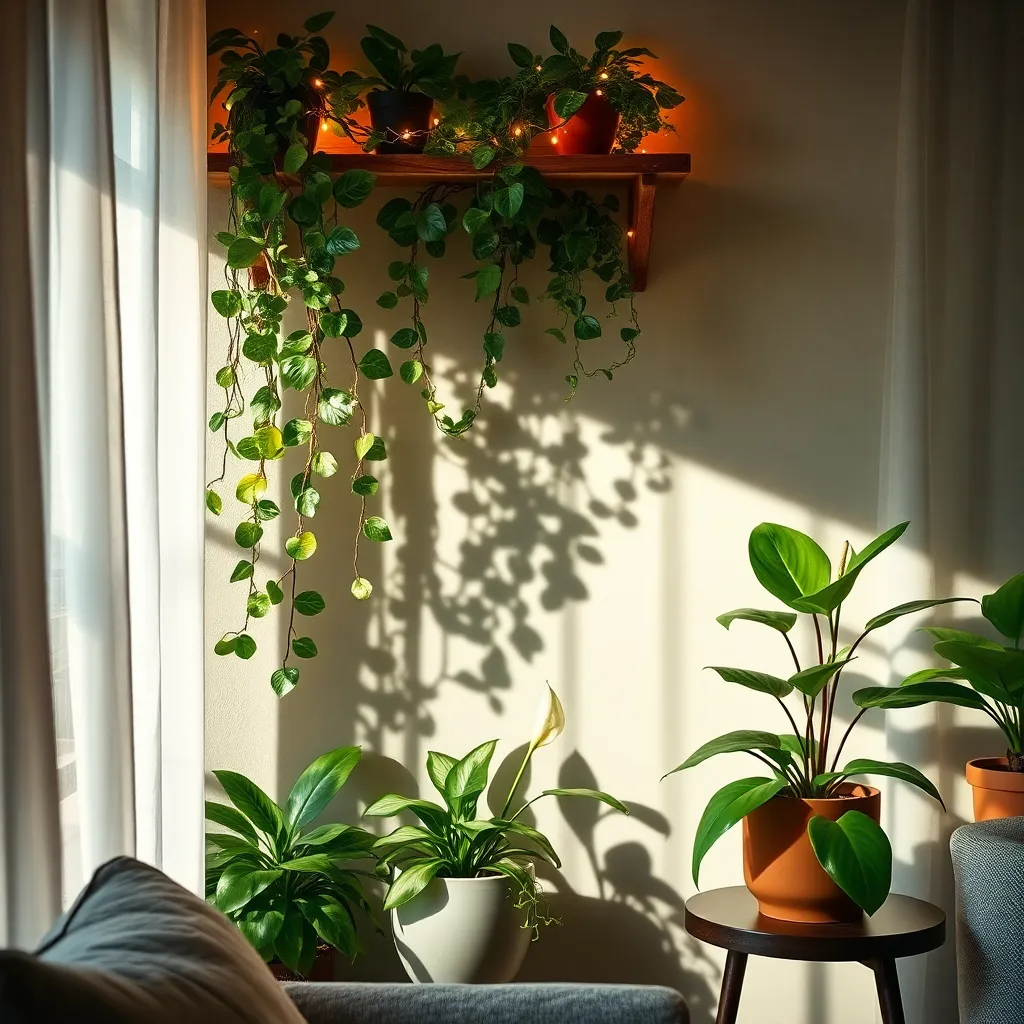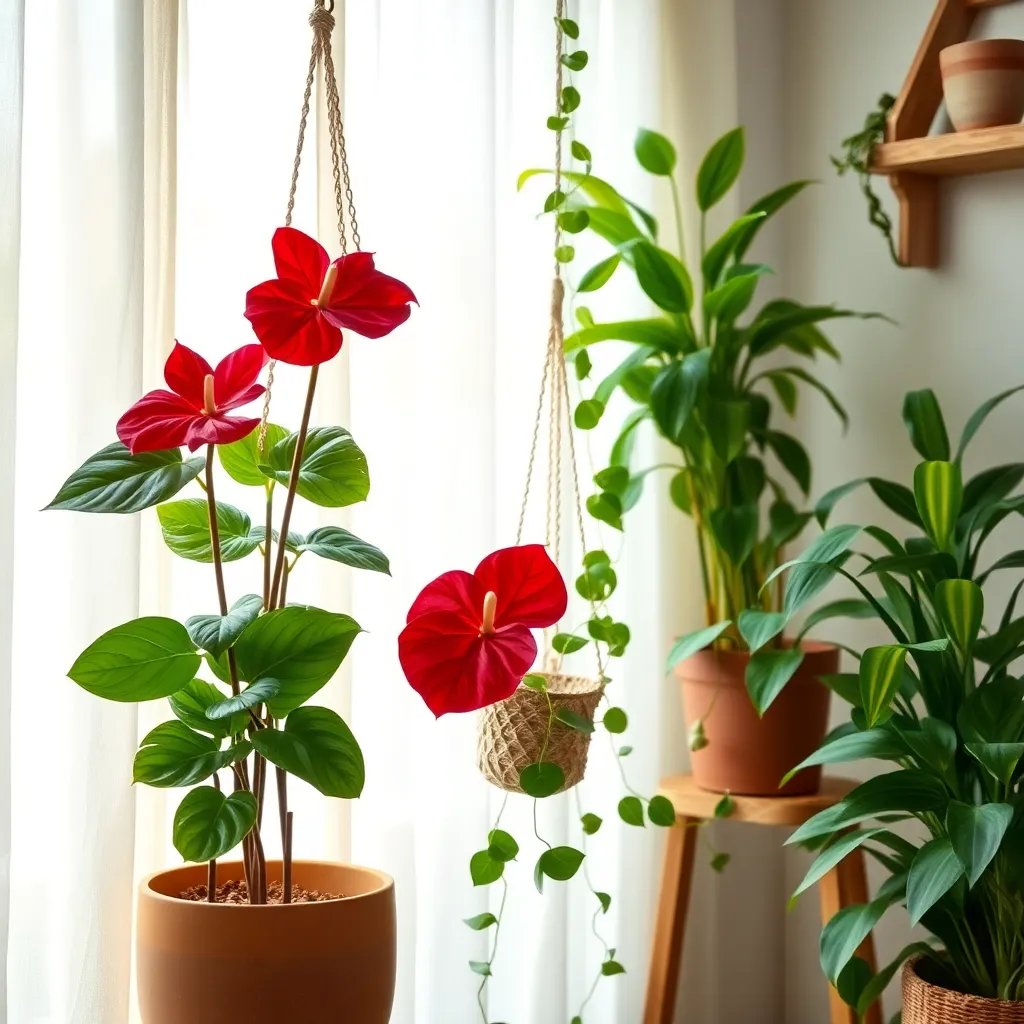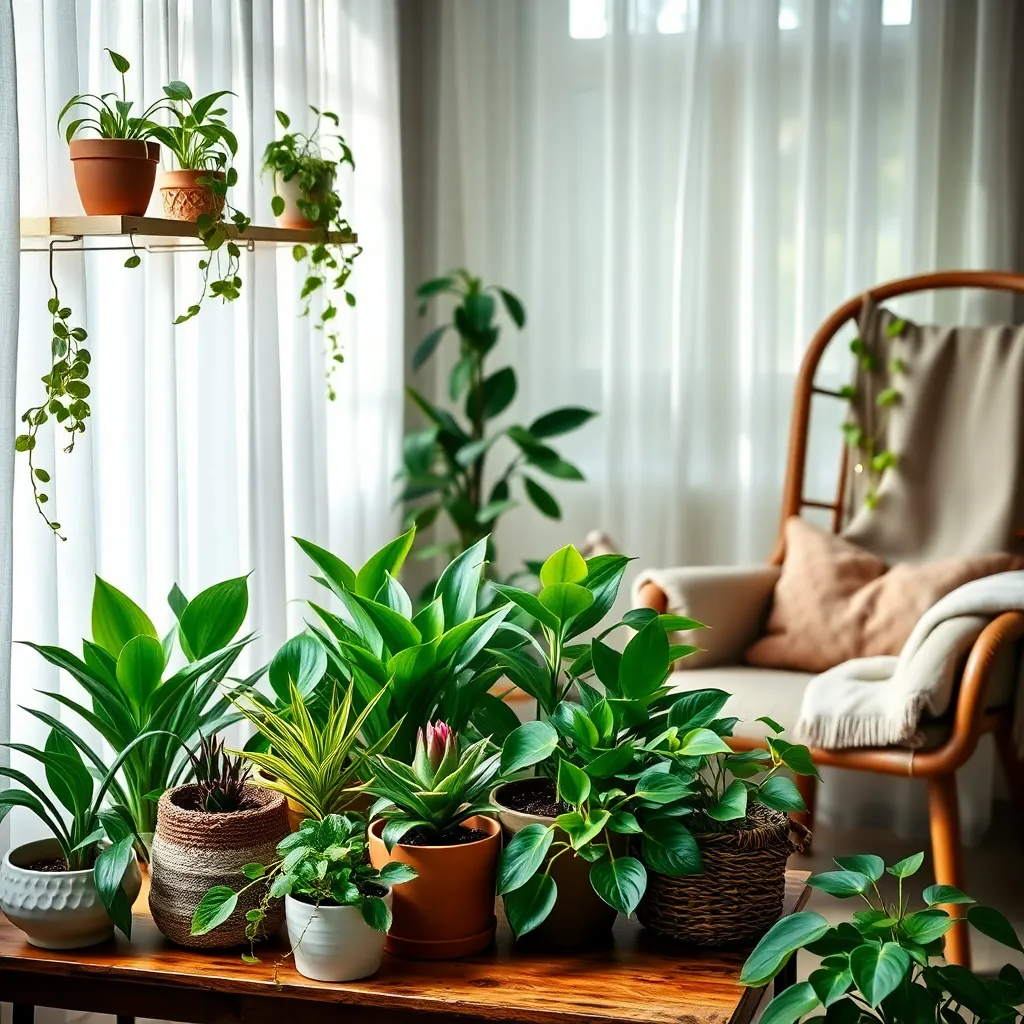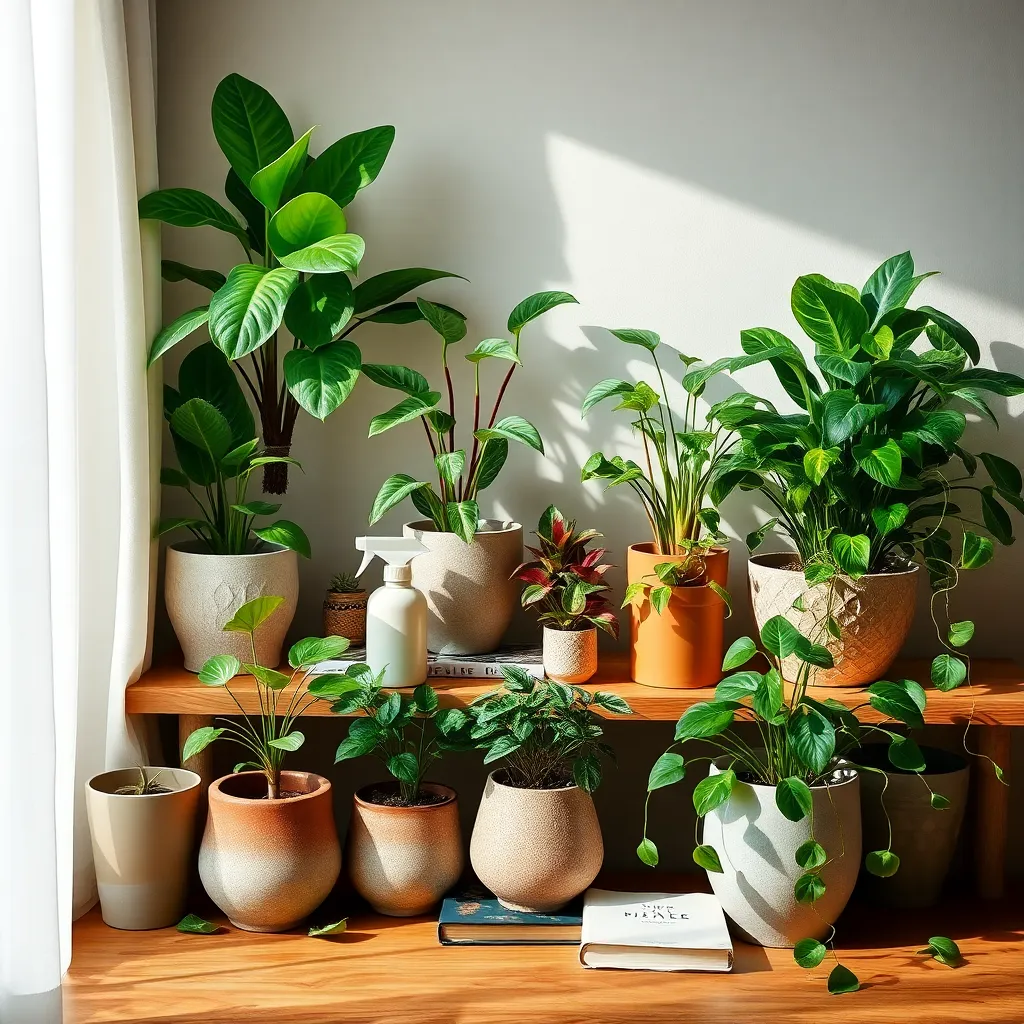For those of us who adore greenery but live in homes where sunlight is scarce, the dream of a thriving indoor garden often seems out of reach. Yet, the world of plants is wonderfully diverse, and many varieties can flourish even in the dimmest corners of your home. Whether you’re just beginning your gardening journey or have a seasoned green thumb, understanding which plants can thrive without direct sunlight is a game-changer.
Bringing indoor plants into your life doesn’t just transform your living space aesthetically; it also enhances your well-being. Many low-light plants are not only resilient but also excellent air purifiers, making them perfect companions for urban dwellers and nature enthusiasts alike. In this article, you’ll discover a selection of robust plants that defy the need for sunlight, learn how to care for them, and gain tips on incorporating them into your home environment.
Embrace the opportunity to cultivate a verdant sanctuary within your walls, regardless of the lighting conditions. You’ll find that nurturing these adaptable plants is both satisfying and surprisingly simple, allowing you to enjoy the benefits of indoor gardening without the typical constraints. Let’s delve into the fascinating world of low-light plants and uncover the secrets to maintaining a lush indoor garden that thrives against all odds.
Understanding Low-Light Plant Needs

Understanding the needs of low-light plants is key to keeping them thriving indoors. These plants have adapted to grow with minimal sunlight, making them perfect for spaces with limited natural light.
To choose the right low-light plants, consider their specific requirements such as humidity levels and soil type. Snake plants and pothos, for example, thrive in well-draining soil and need less frequent watering.
For watering, it’s crucial to allow the soil to dry out between sessions, as overwatering is a common mistake. A good rule of thumb is to water every two to three weeks, depending on humidity and temperature.
Advanced gardeners can enhance plant growth by using artificial light sources like LED grow lights. Position these lights about 12 inches above the plants to mimic natural sunlight without overwhelming them.
Top Shade-Loving Plant Varieties

When considering indoor plants that thrive without direct sunlight, the peace lily is a top contender. These elegant plants prefer indirect light and are known for their ability to purify the air, making them perfect for dim corners.
To care for a peace lily, keep the soil consistently moist but not soggy, as these plants appreciate high humidity. Use a well-draining potting mix and water them when the top inch of soil feels dry to the touch.
Snake plants, or Sansevieria, are another excellent choice for low-light conditions. These hardy plants are nearly indestructible and can tolerate a wide range of lighting environments, including low light.
For best results, allow the soil to dry out completely between waterings, as snake plants are susceptible to root rot in overly wet conditions. A cactus or succulent potting mix is ideal for promoting drainage and preventing waterlogging.
ZZ plants are also ideal for low-light interiors, offering glossy leaves that add a touch of greenery to any room. These plants are incredibly drought-tolerant and require minimal maintenance, making them suitable for beginners.
Ensure you plant your ZZ in a well-draining soil mix and water sparingly, allowing the soil to dry out before watering again. Fertilize once a month during the growing season with a balanced liquid fertilizer to encourage lush growth.
Care Tips for Sunless Spaces

Creating a thriving indoor garden in sunless spaces requires selecting the right plants and providing them with optimal care. Start by choosing plants that naturally thrive in low-light conditions, such as snake plants, ZZ plants, and pothos. These species have evolved to survive with minimal light and are perfect for areas away from windows.
When it comes to watering, less is often more in sunless spaces. Since these areas tend to retain moisture, it’s important to let the top inch of soil dry out completely between waterings. Overwatering can lead to root rot, so always check soil moisture before adding water.
Soil choice is crucial for maintaining healthy plants in low-light environments. Use a well-draining potting mix, such as one designed for cacti or succulents, which helps prevent soggy conditions. Adding perlite or pumice can improve aeration and drainage, making it easier for roots to breathe.
Fertilizing should be done sparingly, as plants in low-light areas grow more slowly. A balanced liquid fertilizer diluted to half strength every two to three months is usually sufficient. This ensures that your plants receive the nutrients they need without the risk of over-fertilization.
Watering Low-Light Indoor Plants

Watering low-light indoor plants requires a different approach than their sun-loving counterparts. These plants typically need less frequent watering due to their slower growth and reduced transpiration rates.
It’s essential to check the soil moisture before watering by inserting a finger about an inch deep into the soil. If it feels dry, it’s time to water, ensuring that the pot has drainage holes to prevent waterlogging.
Use room temperature water to avoid shocking your plant’s roots. Cold water can stunt growth, while overly warm water might encourage root rot in plants that thrive in low-light conditions.
For more advanced care, consider using a moisture meter to monitor your plant’s hydration needs accurately. This tool can be especially helpful if you have several low-light plants with varying requirements, allowing you to customize watering schedules effectively.
Common Mistakes with Low-Light Plants

One common mistake with low-light plants is assuming they don’t need any light at all. Even low-light plants require some indirect light to thrive, so placing them in a completely dark corner will hinder their growth. Consider positioning your plant near a north-facing window or using artificial grow lights for a few hours a day to mimic natural light conditions.
Another frequent error is overwatering, which can lead to root rot in low-light plants. These plants typically use less water due to their slower growth rate, so check the soil moisture with your finger before watering. Aim to let the top inch of soil dry out completely between waterings, and ensure that your pots have proper drainage holes to prevent water from pooling.
Choosing the wrong soil type can also impede the health of low-light plants. It’s important to use a well-draining potting mix, such as one designed for indoor plants, to prevent waterlogged roots. Mix in perlite or coarse sand to improve drainage if necessary, ensuring your plant’s roots have access to both air and moisture.
Some gardeners mistakenly neglect to clean their low-light plants, assuming dust has minimal effect. However, dust accumulation can block light absorption, further reducing the limited light these plants receive. Regularly wipe the leaves with a damp cloth to keep them clean, ensuring they can photosynthesize effectively and maintain their health.
Conclusion: Growing Success with These Plants
In exploring the nurturing parallels between relationships and indoor plants that thrive without sunlight, we’ve uncovered five key concepts to deepen your connections. Firstly, understanding the unique needs of your partner, much like recognizing the specific care requirements of each plant, fosters growth. Secondly, providing consistent support, akin to regular watering, ensures relationships flourish. Thirdly, creating a nurturing environment cultivates mutual respect and happiness. Fourthly, adapting to change, just as plants adjust to different light conditions, strengthens resilience. Lastly, patience and time are essential for relationships to bloom fully.
As an actionable next step, choose one concept to focus on this week, such as enhancing communication, and watch how small changes can lead to significant improvements. Remember, relationships, like plants, require ongoing attention and care.
We encourage you to bookmark this article as a handy reference, ensuring these insights are at your fingertips whenever you need a relationship boost. By integrating these practices into your daily life, you’re paving the way for a successful and fulfilling partnership. Embrace the journey with warmth and optimism, knowing that with time and dedication, your relationships can thrive even in the most challenging conditions.
